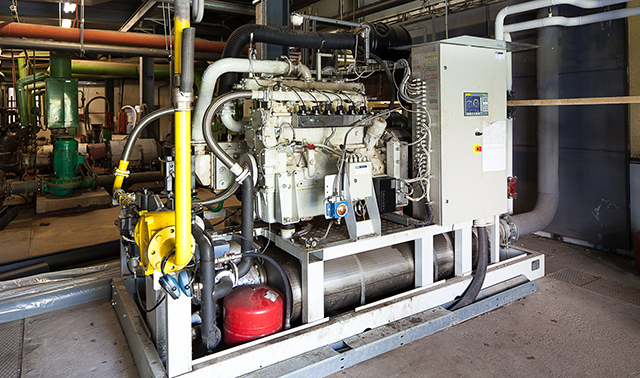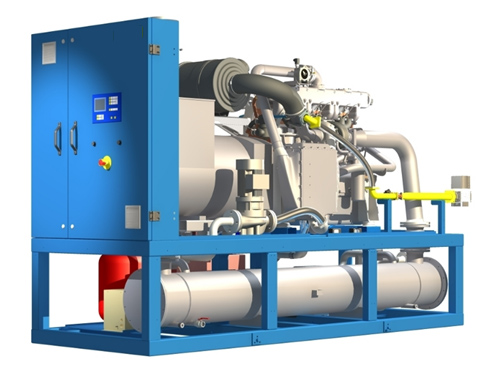Combined heat and power generation
What is cogeneration
Cogeneration is a modern technology of combined generation of electric energy and thermal power. In traditional power plants the excess thermal power, produced during the electric energy generation process, is simply released into the surrounding environment. In contrast with this, cogeneration power plants use this excess thermal power for heating. Thus it saves up not only fuel, but also the financial resources that would otherwise have to be used to buy said fuel.
How does a cogeneration unit work
In all power plants, electricity is produced through a use of electric generator, put into a spinning motion by a turbine. Except in the case of hydroelectric power stations, the turbines are driven by steam, which is usually a result of coal combustion or nuclear fission of Uranium. However, a large quantity of heat is released into the environment and lost in the process, as the technology is not able to use it. Most thermal power plants have energy conversion efficiency of only ca. 30%, the most modern combined gas and steam power stations reach the efficiency of ca. 50%. More losses (of ca. 11%) occur during the transformation and long-distance distribution of electricity. In cogeneration unit, the electric power is produced in the same way as in other power generation units. However, the electric generator is put into motion by a reciprocating engine. Even though the engines used in cogeneration units are typically constructed to run on natural gas, liquid or gaseous fuels may also be used. The thermal power released from the combustion engine is utilised as the source of energy for cooling of oil, exhaust gas, or the engine itself. Therefore the efficiency of cogeneration units is ca. 80-90%.

The advantages of combined generation of heat and electricity
Saving of fuel
The combined generation of heat and electricity allows for a cut down of the amount of fuel necessary by as much as 40%. From the financial point of view, this means the customer will only need to pay 60% of price for the same amount of energy.
Reduction of the cost of fuel
The user gets ca. double output of power while using the same amount of fuel. Therefore they may sell a part of it and reduce the expenses even further.
Minimalisation of power distribution costs
Heat and electricity are generated on the site of usage, thus the costs of long-distance distribution and losses of energy caused by said distribution are avoided. The thermal power generated in a cogeneration unit is used to heat buildings, prepare warm service water, and prepare heat for technological purposes.
Ecological production
The combined generation of heat and electricity decreases the fuel consumption by ca. 40%. Thus cogeneration is approximately 40% more nature-friendly than the alternative.
Emergency power source
Cogeneration units frequently serve also as emergency power sources at the places of continuous consumption.
Refrigeration
It is possible to use the excess heat for technological cooling purposes or air-conditioning, via the use of absorption refrigerator.
The process is called “trigeneration” – a combined generation of electricity, heating and cooling.

